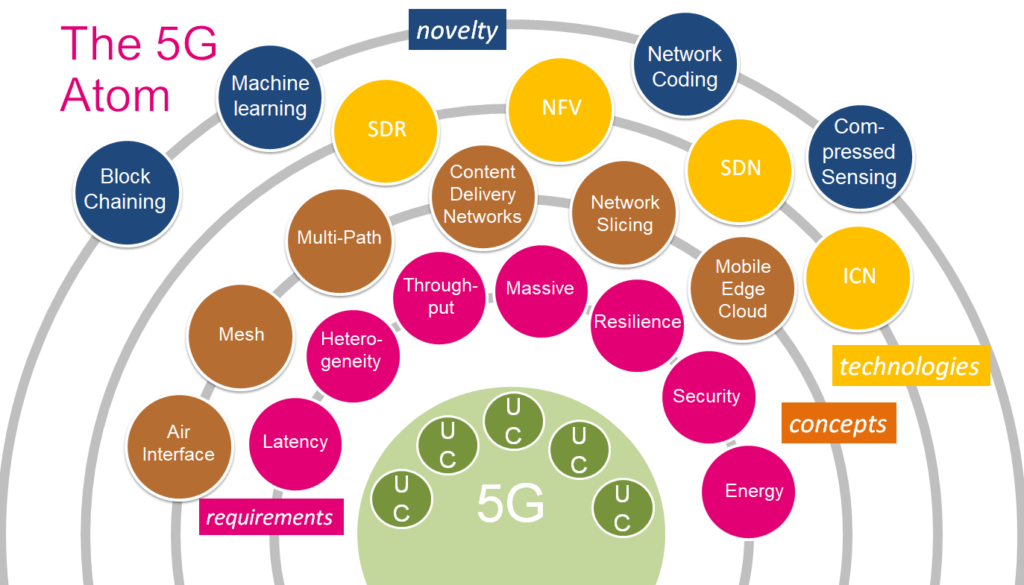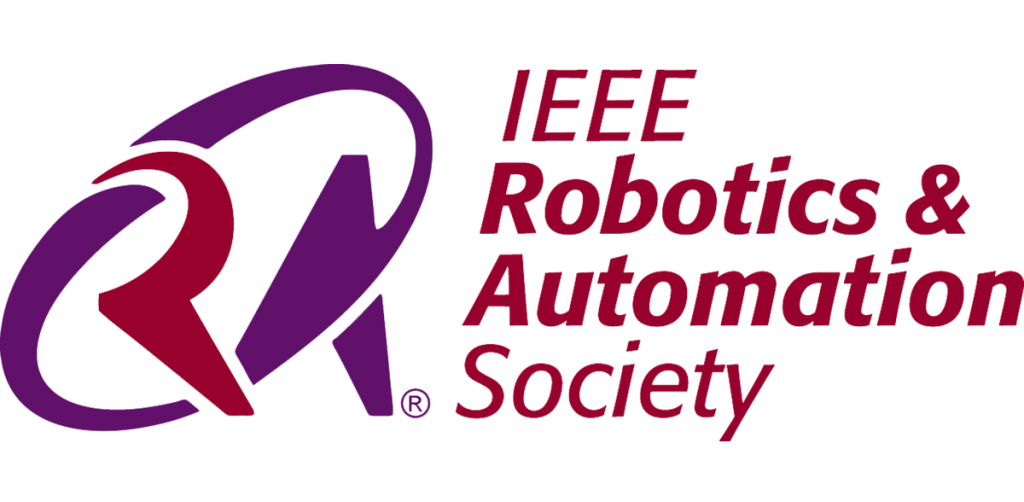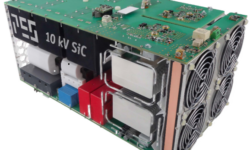What do you wonder about the next generation of wireless technology? There is always been the buzz about 5G and now you can even hear people discussing and putting forward ideas about how the 6G will look like… Will it be just higher speed of internet and cheaper calls? Or is it going to change the in and out of the current system? Does it all seems like a SECRET to you? Here we discuss some interesting trends and technologies that will probably make the future wireless technology more interesting!
The fifth generation of wireless communication is expected to be brought to practice by 2020. With a lot of real time tests and partial implementations are going around the globe, it is now just a matter of time for commercial 5G systems to be put into place. However, the fifth generation of wireless telecommunication comes out with a lot of differences from the previous so called generation changes. From the first generation of wireless communications till 3G, we haven’t seen any massive changes in the infrastructure of wireless networks other than capacity increase. Even the frequency bands being used were the same low frequency bands. While the first and second generations mainly concentrated on the voice communication with basic internet connectivity, the 3G was more focused on multimedia communications such as photos and videos through mobile devices which also increased the data rates. The fourth generation was introduced to further improve these services using the Long Term Evolution (LTE) to provide high speed connectivity. However, there were some major technological up gradation with 4G. The mid frequency bands were introduced to the spectrum and Orthogonal Frequency Division Multple access (OFDM) was used to facilitate high speed connectivity. With LTE-advanced we have almost used the optimum capacity of the 4G networks and a large variety of multimedia services are introduced to the world of mobile networks. Till 4G basic driving forces behind the generation changes have not changed much and remained as simple enhancements in the RAN elements to provide higher data rates and we have rarely witnessed any difference in the philosophy of these advancements. However, the next generation of wireless communication, from the initial standardization discussions, has followed a different philosophy of evolution. The 5G will introduce not only a higher capacity of communication, but also focus on different aspects of wireless technology and introduce significant changes in the network infrastructure to meet the futuristic requirements of the ever growing digital world. Obviously it also includes measures for improved network connectivity and data rates, but also considers other technology aspects such as latency, heterogeneity, resilience, energy etc. On the other hand, this will be the first generation change in the wireless communication era where there is no new access technology is introduced. While the first generation was purely based on analog technology, 2G used Time Division Multiple Access (TDMA) in Europe and Code Division Multiple Access (CDMA) in America and other countries along with TDMA. With 3G, CDMA was defined as the global standard and 4G introduced OFDM. In the 5G era, we expect to continue with OFDM as this is still the best among the access technologies available. The major change in 5G as we discussed is with the new use cases it defines and focus on, instead of the mere capacity improvements.
There are three main use cases that the 5G networks focus on as per the International Telecommunication Union. They are Enhanced Mobile BroadBand (eMBB), Ultra Reliable Low Latency Communications (URLLC), and Massive Machine Type Communications (mMTC). With the current developments with the 5G trials, the eMBB and URLLC requirements are mostly met but mMTC applications are not yet achieved during the trials satisfyingly. The eMBB can be considered as the main part of progression that we have seen in the previous generation evolutions and focus on mobile broadband connections with high capacity, throughput and faster connections. URLLC refer to the requirements of mission critical networks with ultralow end to end delay during the communication. The 5G systems aim to achieve end to end communication with milli second delay for real time services. The mMTC address the challenges of the IoT era and the wide variety of digital devices to be connected over the internet. This use case of 5G tries to provide connectivity to the massive number of digital devices including sensors and such resource constrained devices. As part of the 5G, the radio access network will consider the WiFi and other protocols of wireless communications extensively to provide connectivity. Thus it has to consider heterogeneity not only in the wide variety of devices that it has to serve but also the different technologies that comes under the umbrella of wireless technology.
The 5G is considered as a major step in the evolution of wireless technology because the manifold dimensions where it aims to make differences. As mentioned already, the philosophy of this upcoming generation has changed from mere extension of capacity to other aspects like latency and reliability while massive number of devices is connected. Energy efficiency is another major concern during the design of 5G networks. Further, the security of wireless networks is a major point of interest at this time of increased cyber risk. To satisfy these concerns, 5G networks adopts different novel techniques and concepts. It even enhances the frequency spectrum that will be part of wireless communication by including millimeter waves to the scenario. 5G also propose softwarization and virtualization to provide the flexibility for the network operators to address the challenges and reorganize the network according to different existing and upcoming use cases. The concepts like generic hardware with software solutions and network function virtualization (NFV) also enable the operators to keep the operational as well as capital expenses low. The ideas like cloud and mobile edge computing forms integral part of 5G use cases and examples. It supports network slicing and makes sure that the available resources from bandwidth to hard wares being used in the most efficient way. Furthermore, the 5G networks will also benefit from multiple novel concepts like artificial intelligence, blockchain, software defined networks and network coding. Even the wireless infrastructure is redesigned and the base station centric cell structure that we are currently familiar has been modified to a user centric small cell environment and multi layered cell structure which will also support device to device communication without the intervention of base stations. There are multiple research groups exploring these possibilities and proposing novel technological solutions for 5G and beyond. SEcure network Coding for Reduced Energy nexT generation mobile small cells (SECRET) is one such collaborative European Training Network (ETN) Consortium under the umbrella of Horizon 2020 projects studying the prospects of network coding techniques for next generation mobile small cells.

SECRET is an Innovative Training Network funded by the Marie Sklodowska Curie Actions (MSCA-ITN). The consortium consists of 4 academic and 4 industrial partners spread across five EU member states which trains 13 early stage researchers in the wireless communication and networking, which is highly interdisciplinary and multisectoral. The SECRET project aims to narrow the gap between current networking technologies and the foreseen requirements of future 2020 networking and beyond, to deliver higher networking capacity, ability to support more users, lower cost per bit, enhanced energy efficiency, and finally adaptability to the new nature of services and devices (such as the support for smart cities and Internet of Things (IoT)). The research in SECRET builds on current technology trends, widely accepted to form part of 5G, by aiming to a new deployment of small cells based on the notion of mobile small cells. The proposal then goes beyond the current vision of 5G small cell through disruptive new “femtocell” like paradigms where end-users play the role of prosumers of wireless connectivity, to which we refer to as “Mobile Small Cells”. To this end, SECRET aims at researching ubiquitous mobile small cell access based on exploiting disruptive technologies such as “network coding” and “cooperation” in synergy with a “security framework” and “energy-aware smart front-end”. These small cell hotspots will form a wireless network of mobile small cells, so that prosumers at the cell edge, or in low coverage area can have access to high speed networking. Another dimension of innovation in SECRET is the provision of wireless fronthaul to provide high-speed reduced-cost energy-efficient connectivity to mobile small cells. SECRET studies different aspects of future networks, mainly divided into four research directions and each aspect of the research is analysed by a specific work group.

The first group focus on the radio resource management for the SECRET small cells. In accordance with the expectations of 5G networks, SECRET tries to address a heterogeneous network (HetNet) environment where multiple radio access technologies like LTE and WiFi will coexist to serve a wide variety of user applications and devices. This work group also focus on network coded cooperative (NCC) networks to efficiently use the available radio resources and ensure high quality of service for every user in the network.
Another important aspect of research in the scope of SECRET is the security of future networks where security of next generation small cells, incorporating a “Network Coding overlay”, will be studied. Despite the tremendous advantages of network coding, in terms of bandwidth, energy consumption, and robustness to packet losses, a wide spectrum of security attacks should be addressed if network coding is to reach its full potential in real-world communication systems. This work group targets the design and implementation of efficient secure network coding mechanisms and schemes to mitigate such attacks in the envisioned network-coding enabled mobile small cell network.
Energy efficiency and advanced RF technology is an important concern in the current wireless environment. Further, with the introduction of millimetre waves into the usable spectrum, RF equipments in the 5G systems will have significant differences from the existing models. Another work group in SECRET, Green RF for 5G handsets, focus on developing energy efficient multi-mode RF front-end for next generation handsets. The work group addresses the design, simulation and implementation of low cost energy-efficient RF transceiver modules including energy efficient power amplifiers, multimode RF filtering, and reconfigurable antennae.
The last work group addresses the proof-of-concept for mobile small cell technology, which includes not only a feasibility study, but is complemented by a concrete study on how small cell technology could be the springboard for network sharing in the form of network virtualization. This work group is also expected to provide the backbone for testing different technology solutions that other researchers are proposing by enabling mobile small cells and network virtualization. Here we will build a small cell test-bed supporting different types of data with emphasis on real-time video which is the most demanding and dominating use-case in 5G system, and will act as a vehicle for promoting collaborative ESR research projects, since key algorithms from other work groups can be tested and optimised here.
The basic requirements from the user perspective is simple; we need high speed internet, good quality connections, no buffering during live streaming the world cup and any disturbance while playing counter strike or PubG is simply unacceptable! But from the technical point of view, things are not as easy as it may look like. There have been a tremendous increase in digital devices, especially those getting connected to internet (yes, the so called IoT) in the last few years. Most of us have multiple devices connected, not just the multiple mobiles and laptop you have but the smart watch or your amazon echo, and as a matter of fact, the number of connected electronic devices has already surpassed the number of human beings on earth by 2010. And all these communications happen over an electromagnetic spectrum which is fixed forever. Effectively using the available resources has been the major concern for the engineers and researchers. When users think about breaking the limits and reaching higher levels, the research is usually happening with the question of constraints. How to use the fixed bandwidth efficiently? how to reduce the power requirements of devices? how small the device can be? and so on. This is where the innovation in 5G comes into play and what we are trying to achieve through the SECRET. Through these different work groups, SECRET envisions a futuristic network that will extract the benefits of network coding and cooperation to provide a secure, energy efficient mobile small cell environment. The SECRET project targets to deliver higher networking capacity, ability to support more users, lower cost per bit, enhanced energy efficiency, and finally engineered to provide seamless connectivity to many of the new services and devices that are foreseen in 5G, that include mobile broadband connectivity, IoT and mission critical services. You can read more about SECRET through the official website and the twitter account of the project.




